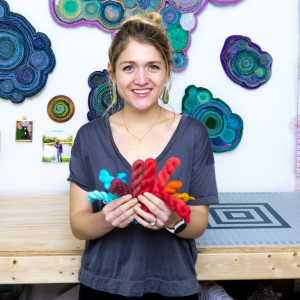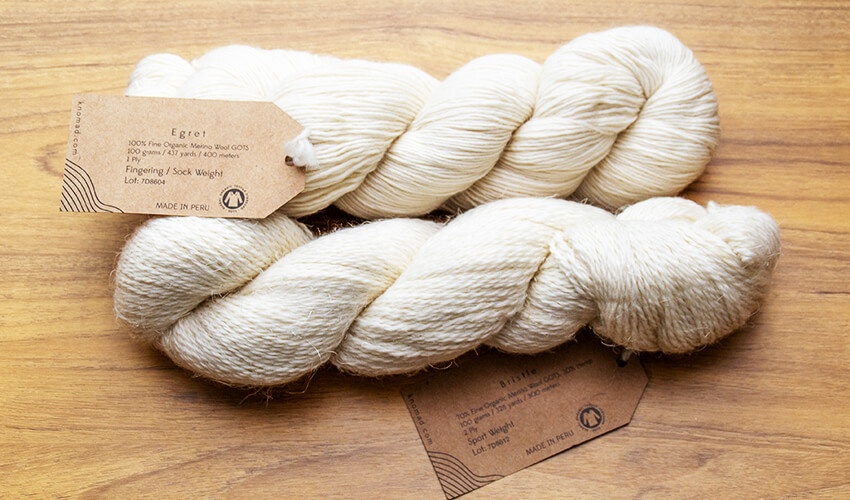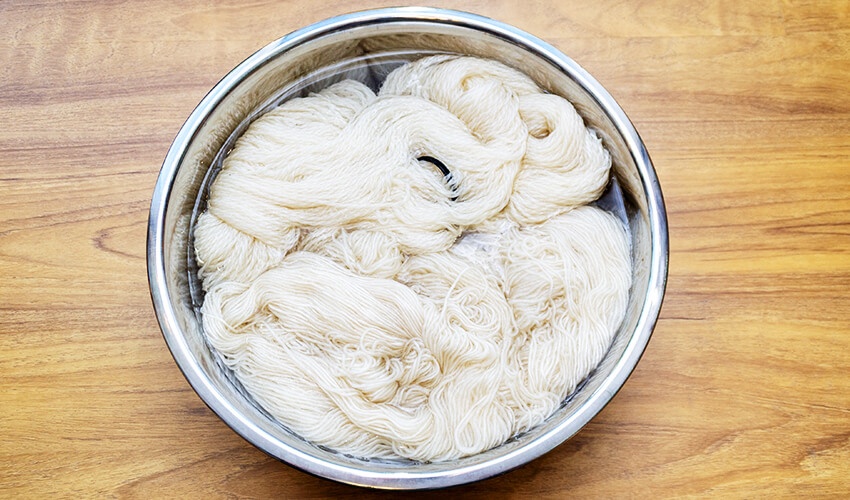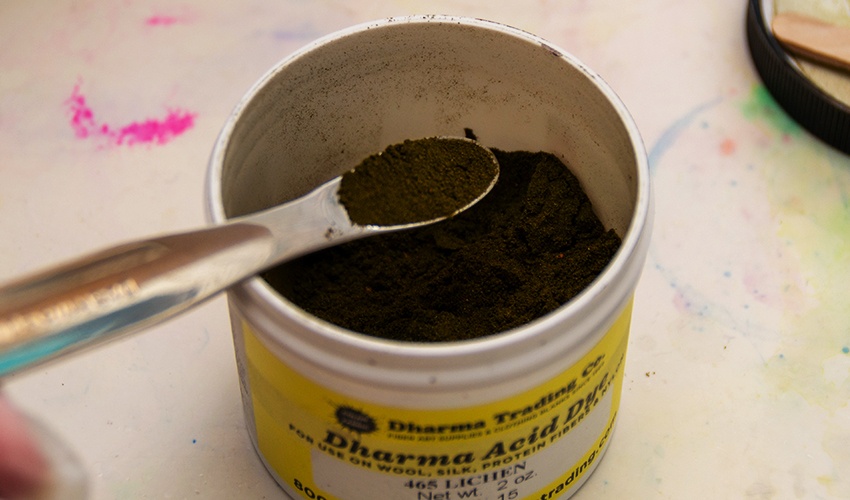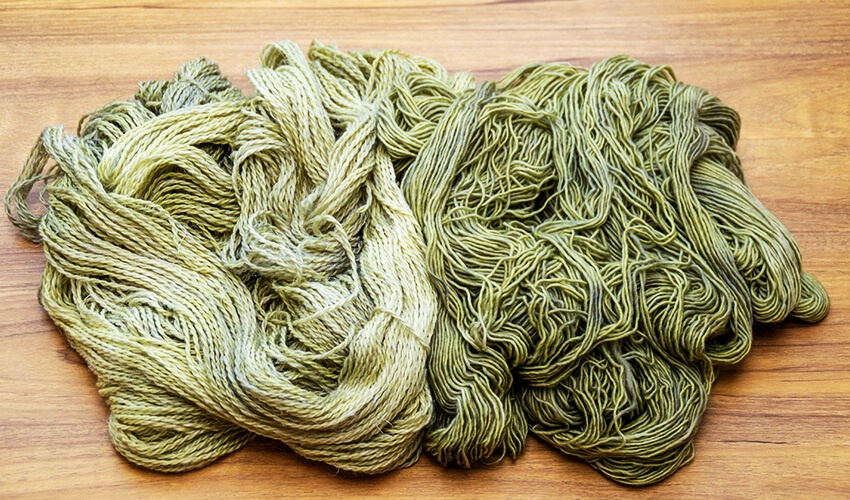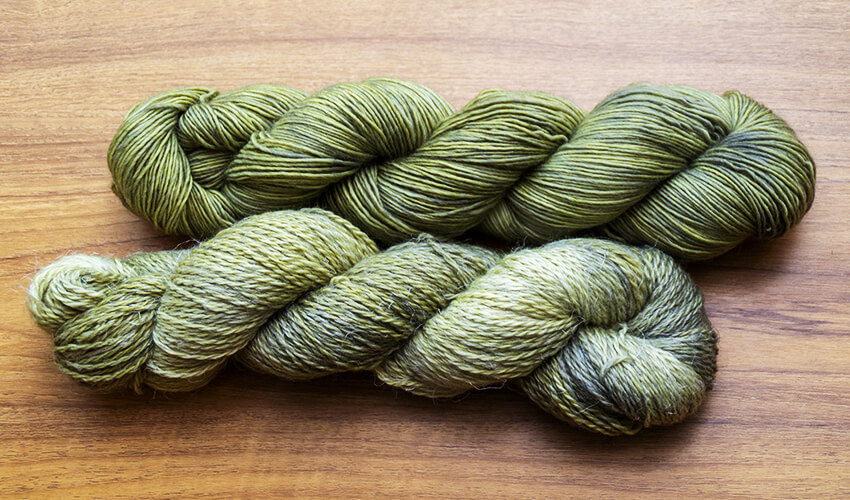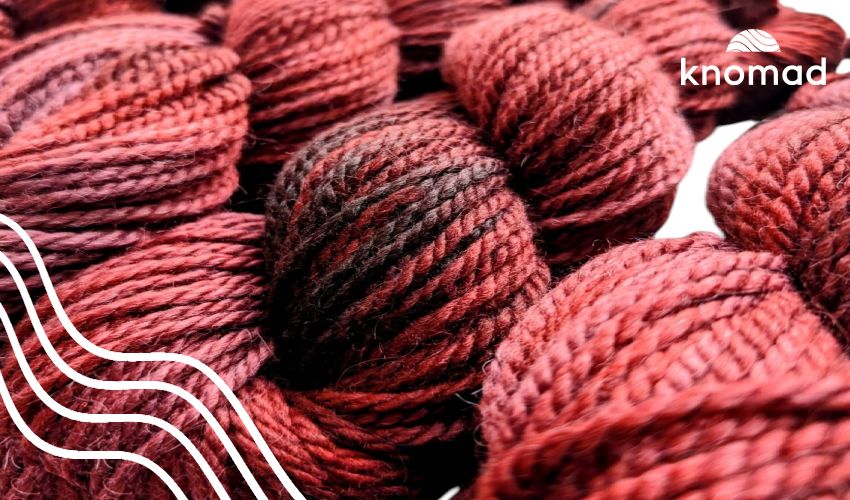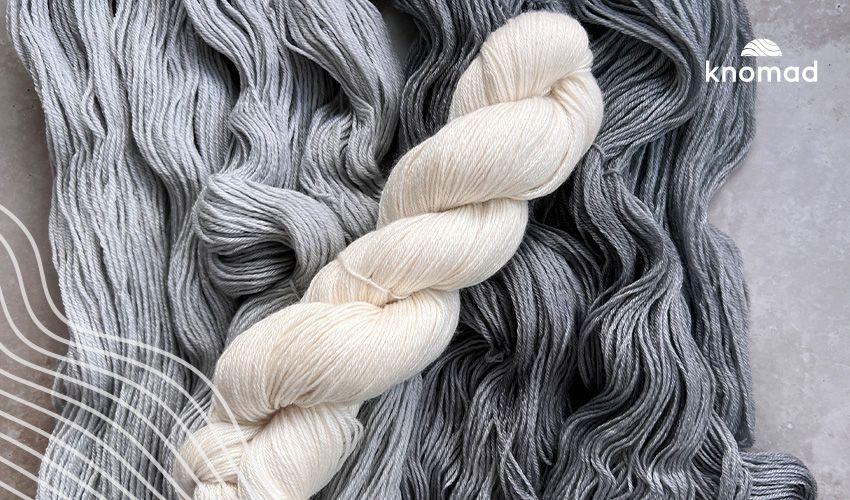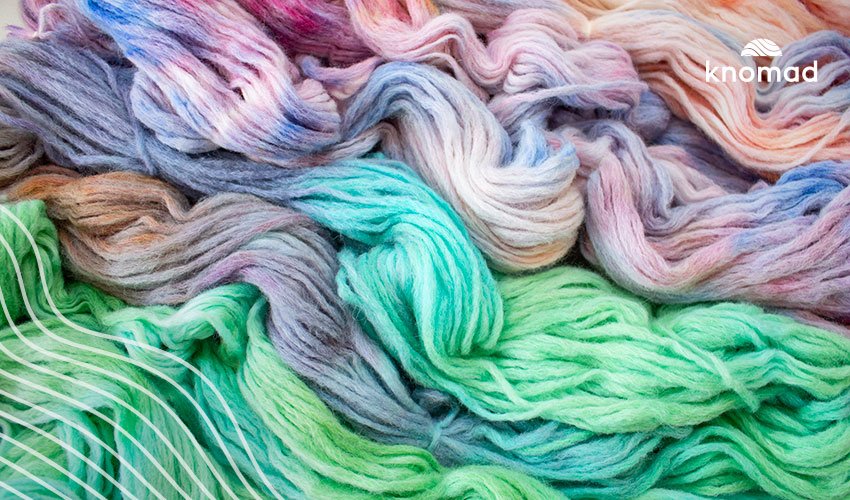Earthy Green on EGRET and BRISTLE
Spring is full of a variety of beautiful shades of green everywhere you look! It is one of my favorite seasons because of this. These earthy colors were the inspiration for what I dyed most recently – two skeins of soft, earthy, green on the sustainable bases EGRET and BRISTLE. Both bases are organic and eco-friendly. BRISTLE is a 2 ply blend of soft organic merino wool with hemp that blend together to create a beautiful texture. EGRET is single ply squishy organic merino wool that is a dream to dye and has a smooth hand feel.
Today we will be using Lichen, an earthy green acid dye by Dharma Trading Company. This shade of green is warm with soft brown undertones and it feels like a great companion for two different sustainable bases! I dyed each skein individually following the exact same process outlined below. If you would like to dye two skeins at once, double the amount of dye used. Let’s get started!
SUPPLIES
One skein BRISTLE
One skein EGRET
Lichen acid dye by Dharma
Citric Acid
Slow cooker or steel pot with lid + heat source
Tongs
1/8 teaspoon
Tablespoon
Gloves
Respirator mask
Large bowl
Water
Zip ties (optional)
White utensil or dish (optional)
*Any materials used in acid dyeing are no longer food safe and should be kept separate
PRESOAK
If you are using zip ties, loop them through each skein. These make the skeins easier to maneuver in the dye bath and pick up with your tongs, but are optional. Fill a large bowl two thirds of the way with cool water. Submerge your skein of BRISTLE and EGRET in the bowl to presoak. The yarn will float a little at first so gently press it down under the water a few times then leave the yarn to soak. This process usually takes 45 minutes to an hour for the yarn to fully absorb the water. The color of the fibre should be noticeably darker and even. The presoak allows the fibres to expand and open up the protective cuticle layer for an even dye application.
We will be working with one skein at a time for this process. The skein that is dyed second can wait submerged in the presoaking bowl until it is time to dye it.
PREPARE THE DYE BATH
Fill your dye pot about two thirds of the way with room temperature water. While wearing your respirator and gloves, dissolve ⅛ teaspoon of Lichen dye into the dye bath. Dissolve a generous dash of citric acid into the dye bath (1-2 tablespoons). Stir to ensure both the acid and dye are fully dissolved. Now you’re ready to add your yarn!
ADD THE YARN AND HEAT
Gently squeeze out the excess water from one skein of yarn. I dyed a skein of BRISTLE first. Slowly lower the skein into the dye bath. I like to gently swish and fluff the yarn as I lower it into the dye bath to ensure the water flows evenly around the yarn. Place the lid on your pot and turn on the heat. If you are using a slow cooker, the high setting works well. If you are using a burner, medium is a good setting.
We want the yarn to come up to right below simmering temperature and stay there to set the dye. A good rule of thumb is to look for some steam but avoid steady bubbles. Bubbles will agitate the yarn and too much agitation can cause felting. If you’re using a thermometer, 175-185 degrees fahrenheit or 78-82 degrees celsius is a good range for setting dye on a protein fibre.
When the dye bath is exhausted, turn off the heat. A dye bath is exhausted when the water is clear. This means that all of the available pigment has bonded to the fibre. I use a white spoon to check and see if the water is clear. This usually takes 45 minutes to an hour and a half.
COOL, RINSE, AND DRY
Remove the lid and allow the yarn to cool fully before rinsing it out in room temperature water. It usually takes 2-3 hours for the yarn to cool. When you rinse the yarn, the water should run clear. Squeeze the skein gently and rinse it a few times before hanging it to dry.
Repeat the dye process with your second skein of yarn.
THE FINISHED YARN
The lighter shade of green really shows off the different textures of EGRET and BRISTLE. Share your dyed skeins with us on social media using the hashtag #knomad_yarn. We can’t wait to see what you make!
